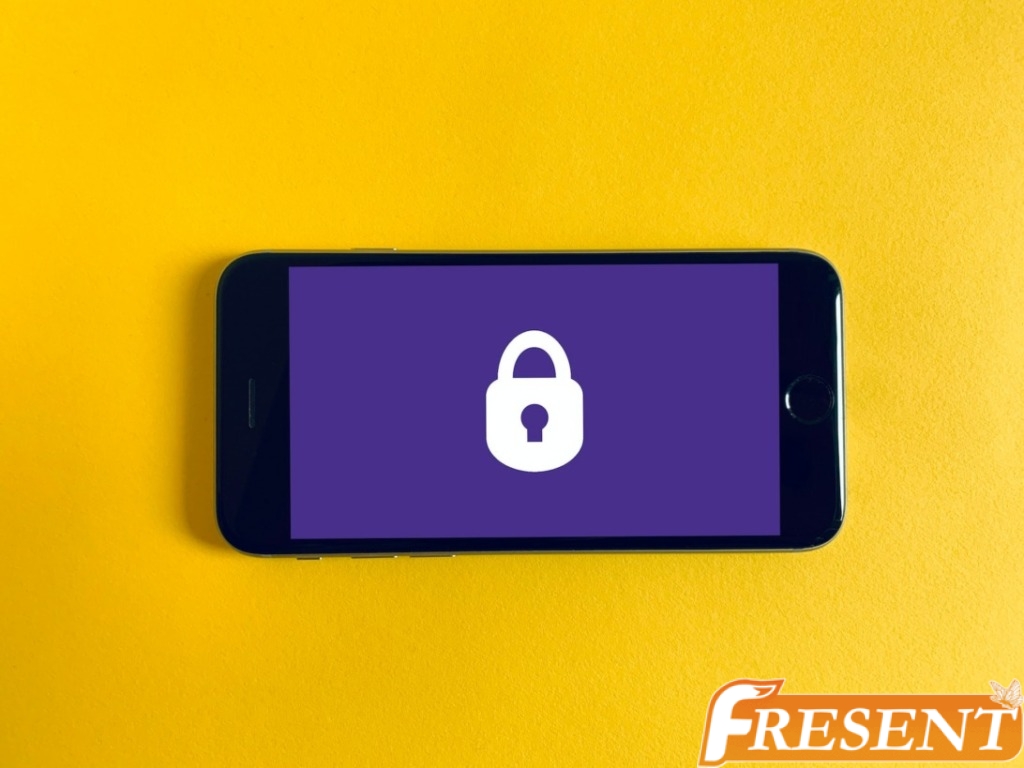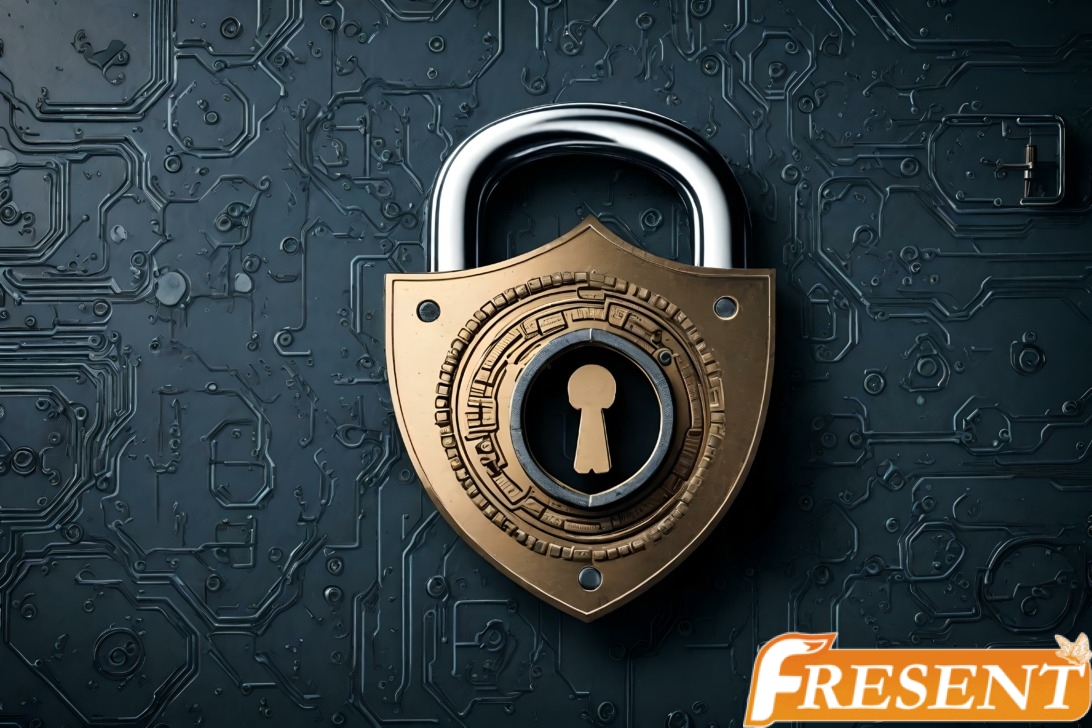You may think that your SaaS company’s security measures are top-notch, but the truth is, protecting customer information is a never-ending battle. The stakes are high when it comes to data breaches and cyber attacks, which can result in devastating consequences for both your customers and your business. In fact, a single breach can cost you millions of dollars in damages, not to mention the loss of trust from your customers.
That’s why it’s crucial to implement robust SaaS data security best practices to safeguard customer information. These practices aren’t just about meeting compliance requirements or checking off boxes on a list. They’re about taking proactive measures to prevent data breaches and ensuring that your customers’ sensitive information remains confidential and secure at all times. So buckle up and prepare to learn about the essential steps you need to take to protect your customers’ valuable data from potential threats.
Importance of SaaS Data Security
You can’t afford to let your customers’ data fall into the wrong hands. That’s why SaaS data security is crucial for any business that values their reputation and customer trust. Risk mitigation is an essential part of SaaS data security, as it helps identify potential threats and vulnerabilities before they can be exploited. Cybersecurity strategies are another vital aspect of protecting customer information from unauthorized access or theft.
Hackers and cybercriminals are becoming increasingly sophisticated in their attacks on businesses, making it more critical than ever to have robust cybersecurity measures in place. A breach not only puts sensitive customer information at risk but can also damage a company’s reputation and result in costly legal fees. By implementing proper SaaS data security protocols, you can protect against these risks and safeguard your customers’ data.
Conducting a data security risk assessment is the first step towards ensuring your SaaS platform is secure for customers to use. This process involves identifying potential risks, evaluating current security measures, and developing a plan to address any weaknesses or vulnerabilities found. With a comprehensive understanding of your system’s strengths and weaknesses, you can implement effective cybersecurity strategies that will help safeguard customer data from all possible threats.

Conducting a Data Security Risk Assessment
Assessing the potential risks of a breach is crucial for safeguarding sensitive data. A data security risk assessment helps identify vulnerabilities and threats that could compromise customer information. Conducting this type of evaluation is necessary to ensure compliance with data privacy regulations and protect against cyberattacks.
To conduct an effective data security risk assessment, consider the following bullet points:
- Identify all types of sensitive information that your organization stores, transmits or processes.
- Evaluate the likelihood and impact of potential threats such as malware attacks, unauthorized access, and physical theft.
- Develop risk mitigation strategies based on the identified risks.
By conducting a thorough assessment, you can understand the level of protection needed to secure your customers’ data properly. Furthermore, it allows you to prioritize security investments by focusing on high-risk areas first. Implementing a comprehensive plan for mitigating these risks will help ensure that your customers’ confidential information remains safe from cybercriminals.
As part of safeguarding your sensitive business data, implementing strong password policies is essential. By requiring complex passwords and two-factor authentication measures, you can reduce the likelihood of unauthorized access. Moreover, using unique credentials for each user account diminishes the chances of attackers gaining access to multiple systems in case one set gets compromised. To effectively implement robust password policies across your organization requires careful planning and execution.
Implementing Strong Password Policies
To improve the security of your SaaS platform, you should implement strong password policies. This includes requiring passwords to be both complex and long, with a mix of upper and lower case letters, numbers, and special characters. Two-factor authentication can also provide an additional layer of protection to prevent unauthorized access. Regularly updating passwords is also crucial to ensure continued security against potential threats.
Password Complexity and Length
Make sure your passwords are both complex and lengthy to ensure the protection of customer information. When setting password strength requirements, it is important to consider factors such as length, complexity, and the use of special characters. A strong password should be at least 12 characters long, contain a mix of upper and lowercase letters, numbers, and symbols.
In addition to creating strong passwords manually, you can also utilize password managers which generate random passwords with high entropy that are difficult for hackers to crack. However, keep in mind that even with a strong password policy in place, it is still possible for cyber attackers to obtain access through phishing scams or other social engineering tactics. That’s why implementing two-factor authentication as an additional layer of security is highly recommended.
Two-Factor Authentication
You can greatly enhance the security of your accounts by implementing a simple yet effective measure: two-factor authentication. This process requires users to provide two forms of identification before accessing their account, typically a password and some form of biometric verification, like a fingerprint or facial recognition.
Advantages of using two-factor authentication include an added layer of security that makes it more difficult for attackers to gain access to your account, even if they have obtained your password through phishing or other means. Additionally, because biometric verification is unique to each user, it helps prevent unauthorized access from individuals who may have gained access to another user’s password. However, there are also some disadvantages and implementation challenges with this method, such as the cost and potential inconvenience for users who may need additional hardware or software to enable this feature on their devices.
Regular password updates can also help increase the overall security of your accounts by ensuring that passwords are not used for an extended period and potentially compromised.
Regular Password Updates
By regularly updating your passwords, you can stay one step ahead of potential hackers and safeguard your valuable online assets. Password expiration is a common security measure that forces users to change their passwords after a certain period of time has passed. This ensures that passwords are not used for extended periods, reducing the risk of bad actors being able to guess or steal them.
Password rotation is also an effective way to enhance security. It involves changing your password on a regular basis, regardless of whether it has expired or not. This helps to make it more difficult for unauthorized individuals to access your account as they will have less time to crack the new password. By implementing these best practices, you can significantly reduce the likelihood of security breaches and protect sensitive customer information from falling into the wrong hands.
As important as regular password updates are, encryption of data is another crucial aspect in safeguarding customer information.

Encryption of Data
To ensure the security of your customers’ data, it is important to understand encryption and its role in protecting sensitive information. By implementing encryption techniques, you can prevent unauthorized access to data even if it falls into the wrong hands. Additionally, secure key management is crucial for maintaining the integrity of encrypted data and preventing breaches.
Understanding Encryption and Its Importance
Encryption is an essential tool for safeguarding sensitive customer information in Saas data security. Encryption algorithms are used to convert plain text into a coded format that can only be read by authorized parties with the correct decryption key. Public Key Infrastructure (PKI) is a widely used encryption technique that involves the use of two keys – a public key and a private key – to encrypt and decrypt data.
The importance of encryption cannot be overstated, as it ensures that customer information remains confidential and secure. Without proper encryption techniques, sensitive data such as credit card numbers, social security numbers, and other personal information could easily fall into the wrong hands. Implementing encryption techniques is crucial for any Saas company looking to protect their customers’ privacy and maintain their trust in the service provided.
Implementing Encryption Techniques
Implementing encryption techniques is not only necessary for safeguarding sensitive data, but it is also a fundamental aspect of building trust with customers and ensuring their peace of mind. As a SaaS company, you understand the importance of protecting your clients’ information from hackers and other malicious entities. Encryption provides an extra layer of security to keep confidential data safe from prying eyes. Here are some benefits of encryption for SaaS companies:
- Protects sensitive data: Encryption helps protect sensitive data such as passwords, credit card details, and social security numbers by making them unreadable to unauthorized users.
- Mitigates risk: Implementing encryption reduces the risk of data breaches or cyber-attacks because even if hackers gain access to encrypted information, they won’t be able to read it without the decryption key.
- Builds trust with customers: Customers are more likely to trust a SaaS platform that implements strong security measures like encryption.
- Compliance requirements: Encryption is often mandated by industry regulations such as HIPAA and GDPR.
Despite its benefits, implementing encryption in SaaS platforms can pose certain challenges such as compatibility issues with different software systems or added costs for implementation and maintenance. However, the advantages far outweigh these challenges when it comes to securing customer information.
To ensure maximum protection for your clients’ confidential data, secure key management is crucial in addition to implementing encryption techniques.
Secure Key Management
Now that you understand the benefits of encryption, it’s time to take your security measures to the next level with secure key management. A secure key management system is essential in safeguarding customer data from unauthorized access or theft. It involves storing and managing cryptographic keys used for encryption and decryption processes in an environment that meets hardware requirements and implements access control measures.
Hardware requirements for a secure key management system include dedicated servers or hardware security modules (HSMs) that can securely store the keys. Access control measures, on the other hand, ensure that only authorized personnel can access the keys through multi-factor authentication, role-based permissions, and regular audits. Implementing a secure key management system ensures that even if an attacker gains access to encrypted data, they won’t be able to decrypt it without the proper keys.
As you move forward in securing your SaaS application’s data, don’t forget about regular software updates and patches. These updates fix vulnerabilities that attackers could exploit to gain unauthorized access to your systems or customer data.
Regular Software Updates and Patches
Keeping your software up-to-date is crucial for ensuring the security of your customer’s information. Automated updates and patch management strategies can help you stay on top of potential vulnerabilities in your system. Here are four reasons why regular software updates and patches should be a top priority:
- Vulnerability exploitation: Hackers can exploit known vulnerabilities in outdated software to gain access to sensitive data.
- Loss of reputation: A data breach caused by an outdated system can damage your company’s reputation, leading to loss of customers and revenue.
- Compliance violations: Failure to keep software updated may result in non-compliance with industry regulations such as GDPR or HIPAA.
- Costly recovery: Recovering from a cyber-attack or data breach can be expensive, so investing in regular updates and patches is a more cost-effective approach.
Incorporating automated updates and patch management strategies into your security plan will save you time and reduce the risk of data breaches. By keeping all systems up-to-date, you minimize the chances of hackers finding weaknesses within them. Additionally, having a well-designed patch management strategy ensures that each update goes smoothly without any downtime for critical services.
As important as regular updates are, they’re only one part of securing customer information from unauthorized access. The next step is controlling who has access to what data within your organization – which we’ll explore in our next section about controlling access to data.
Controlling Access to Data
You have the power to limit who can view and edit sensitive information, giving your customers peace of mind knowing their data is protected. Data access control refers to the practice of controlling who has permission to access specific data or files within a system. By implementing user permissions management, you can ensure that only authorized individuals have access to sensitive customer information.
User permissions management involves assigning different levels of access to users based on their role within the organization. For example, a sales representative may only be granted access to customer contact information while an IT administrator may have full access to all company data. Additionally, it’s important to regularly review and update user permissions as employees change roles or leave the company.
By controlling access to data, you are taking an important step in protecting customer information from unauthorized access and potential breaches. However, it’s also important to implement regular data backups as an additional layer of protection against unexpected events such as hardware failure or cyber attacks.
As you continue implementing best practices for SaaS data security, remember that each step builds upon the last in creating a comprehensive strategy for protecting your customers’ valuable information. The next section will explore the importance of regular data backups in ensuring business continuity and preserving critical data in case of emergency situations.
Regular Data Backups
To ensure your business continuity, it’s crucial to regularly backup important data, such as financial records and customer information. Data retention policies should be established to determine how often data should be backed up and for how long it needs to be retained. Disaster recovery solutions should also be put in place to ensure that in the event of a cyber attack or system failure, data can be recovered quickly and efficiently.
Regularly backing up your data is essential for protecting against potential data loss. In addition to cyber attacks, accidental deletion or hardware failure can also result in lost data. By implementing a regular backup schedule, you can mitigate the risk of losing valuable information. It’s important to test your backup process periodically to ensure that it is functioning correctly and that your backups are complete.
Incorporating disaster recovery solutions is another critical step in protecting your customer information. Having a plan in place for restoring systems after an unexpected outage or disaster can minimize downtime and enable you to resume operations quickly. Disaster recovery solutions can include everything from redundant servers to cloud-based backups that allow for remote access and restoration in the event of a catastrophe. With these measures in place, you’ll have peace of mind knowing that even if something goes wrong, you’re prepared to recover quickly without risking the loss of customer trust or revenue.
As we move into the next section about employee training and awareness, it’s important to note that while technical measures like regular backups and disaster recovery solutions are vital components of any security strategy, they’re only part of the equation. Without proper employee training on how best practices protect sensitive information from hacking attempts by both outsiders and insiders alike will not suffice when trying to keep your customers’ private details secure from threats both known and unknown alike.
Employee Training and Awareness
You need to understand the importance of employee training and awareness when it comes to SaaS data security. It is crucial that your employees are well-equipped to identify threats and respond appropriately. Security awareness programs can help educate your staff on best practices for protecting customer information, while incident response training can prepare them for handling potential breaches. By investing in these measures, you can ensure that everyone in your organization is doing their part to keep sensitive data safe.
Importance of Employee Training
Effective employee training is crucial for safeguarding customer information in SaaS data security best practices. It is not enough to provide a one-time training session during onboarding; ongoing training is necessary to address the ever-evolving threat landscape and new technologies. Employees must be aware of the common mistakes that can compromise data security, such as using weak passwords, clicking on suspicious links or downloading unverified software.
Regularly scheduled employee training sessions are essential for ensuring that all staff members understand the importance of protecting customer information. In addition to addressing common employee mistakes, these sessions should also cover topics such as identifying phishing attempts and handling sensitive data securely. By investing in proper training, your organization can reduce the risk of cybersecurity breaches and protect both your customers and your business. Transitioning into the subsequent section, creating security awareness programs can further enhance your organization’s ability to prevent cyber attacks.
Security Awareness Programs
Hey, we get it – cybersecurity can be boring. But listen up, because if you want to keep your company’s sensitive data safe from hackers, you might want to consider implementing a security awareness program that engages and informs your employees. Here are some reasons why:
- A security awareness program can help employees understand the importance of data protection and the role they play in keeping sensitive information secure.
- By designing curriculum that is relevant and interactive, employees are more likely to retain the information presented to them.
Measuring effectiveness is key to ensuring your security awareness program is successful. One way to measure its effectiveness is by conducting regular assessments or quizzes. This will help identify areas where employees may need additional training or education. Another way to measure its effectiveness is by monitoring behavior changes among employees after completing the program.
Now that you have a better understanding of how a security awareness program can benefit your organization, let’s move on to incident response training.
Incident Response Training
If your organization wants to be prepared for a cyber-attack, it’s important to invest in incident response training that teaches employees how to identify and respond to security incidents in a timely and effective manner. This training should involve simulating incidents that could occur within your organization so that employees can practice their incident response procedures in a controlled environment. It should also cover the composition of an incident response team and provide guidelines on how team members should communicate with each other during an incident.
Simulating incidents can help employees develop the skills they need to quickly identify and respond to security threats. During these simulations, employees can practice using tools such as firewalls, intrusion detection systems, and log analysis software. Incident response training should also cover the different roles within an incident response team, including the incident commander, technical support personnel, and legal representatives. By investing in this type of training, your organization will be better equipped to handle security incidents when they occur. Moving forward into vendor management considerations, it is important to ensure that third-party vendors have their own robust security measures in place before allowing them access to customer data.

Vendor Management
Managing vendors can be a hassle, but it’s crucial to ensuring the security of your customers’ information. When selecting vendors, it’s important to choose ones that prioritize data security and have a strong track record in protecting customer information. During contract negotiation, make sure to include specific language and requirements related to data protection, such as regular security audits and immediate notification in case of a breach.
But vendor management doesn’t end at selection and negotiation. Ongoing monitoring and review is necessary to ensure that vendors are maintaining their commitment to data security. Regularly reviewing access controls, encryption methods, and physical security measures can help identify potential vulnerabilities before they become actual threats.
In addition to proactive measures, having an incident response plan in place is essential for effective vendor management. In the event of a breach or other security incident involving a vendor, having an established plan with clear steps for communication and remediation can minimize damage and protect customer trust. The next section will delve deeper into incident response planning for saas data security best practices.
Incident Response Plan
To effectively respond to security incidents involving vendors, you need to establish an incident response plan that outlines clear steps for communication and remediation. Creating and testing this plan is crucial for ensuring that your team knows what actions to take in the event of a breach or other security incident. It’s important to involve all relevant stakeholders in the creation process, including IT, legal, and business leaders.
In addition to creating and testing your incident response plan, effective communication and coordination are key elements of a successful response effort. Your plan should include specific protocols for notifying stakeholders about potential security incidents, as well as guidelines for coordinating with external partners such as law enforcement agencies or regulatory bodies. It’s important to designate specific roles and responsibilities within your team so that everyone knows their role during an incident.
Ultimately, having a robust incident response plan can help minimize the impact of security incidents on your customers’ data. However, it’s important to keep in mind that compliance with regulations is also critical for protecting customer information. In the next section, we’ll explore some best practices for maintaining compliance with relevant laws and standards.
Compliance with Regulations
You probably love staying up all night researching and interpreting complex regulations from multiple governing bodies to ensure your company remains compliant. However, regulatory compliance challenges are a common threat that every SaaS business faces. Failure to comply with regulations can lead to severe legal implications, such as fines and lawsuits. Therefore, you must remain vigilant and stay informed about the latest updates in regulatory policies.
One of the critical components of maintaining compliance is understanding the specific regulations that apply to your business. Some of these may include data privacy laws like GDPR or CCPA, industry-specific standards like HIPAA for healthcare companies, or federal cybersecurity guidelines like NIST. It’s essential to have a comprehensive understanding of these regulations and take proactive measures to adhere to them fully.
Non-compliance can result in significant financial losses, reputational damage, and loss of customer trust. Therefore, it’s crucial to prioritize compliance planning by identifying potential areas of risk within your organization and developing a robust plan for mitigating those risks proactively. Regular security audits can be an effective tool for monitoring your organization’s compliance status continually while identifying vulnerabilities before they become major issues.
Regular Security Audits
Now that you are aware of the regulations governing SaaS data security best practices, it’s time to delve into the importance of regular security audits. Compliance with regulations is essential, but it doesn’t guarantee complete protection against cyber attacks. Regular security audits can help you identify vulnerabilities and take measures to address them before they’re exploited.
The frequency of audits depends on your business needs and risk profile. However, conducting an audit at least once a year is recommended. During an audit, you should evaluate your infrastructure’s security posture, assess compliance with relevant regulations and standards, review access controls and permissions, and test incident response plans.
Outsourcing audits to third-party experts can provide an objective assessment of your organization’s security posture. Additionally, external auditors bring a fresh perspective and may identify gaps that internal teams overlook. It also frees up internal resources to focus on other critical aspects of your business.
Regular security audits are crucial for maintaining the integrity of customer information in SaaS applications. They provide insight into vulnerabilities that cybercriminals could exploit to gain unauthorized access to sensitive data. In the next section about cloud provider security, we’ll discuss how cloud providers secure their infrastructure and what role customers play in securing their data within these environments.
Cloud Provider Security
Let’s explore how cloud providers ensure the safety and privacy of your sensitive data in their infrastructure. Cloud provider selection is an important step in ensuring the security of customer information. When evaluating potential providers, it is crucial to consider their security features, such as encryption, access controls, and monitoring.
Cloud providers typically offer various levels of security measures that can be customized to meet individual needs. Encryption is one key feature offered by most cloud providers. They use complex algorithms to convert data into an unreadable format that can only be deciphered with a decryption key. Access controls are another important feature provided by cloud providers which allow administrators to control user access based on roles and responsibilities.
In conclusion, selecting a reliable cloud provider with robust security features is critical for maintaining customers’ trust and protecting sensitive data. Once you have chosen a suitable provider, it is essential to regularly monitor their performance through audits and assessments. The next step is to develop a disaster recovery plan that will help you respond quickly in case of any unexpected events or breaches of security.
Disaster Recovery Plan
Creating a solid disaster recovery plan is like having an insurance policy for your business, ensuring that you have a plan in place to quickly recover from unexpected incidents. Disaster recovery strategies are essential to ensure the continuity of your business operations during unforeseen disasters like fires, cyber-attacks, or natural disasters. These strategies involve identifying potential risks and creating contingency plans to mitigate them.
Business continuity planning involves more than just data backup and restoration. It includes various other aspects such as communication protocols, testing procedures, and employee training programs. Your disaster recovery plan should include all these elements to ensure that your business can resume normal operations as soon as possible after any disruption.
To keep up with the evolving security landscape and new threats emerging every day, it’s crucial to continuously improve your disaster recovery plan. Regular testing of the plan ensures its effectiveness and identifies areas for improvement. Therefore, it’s essential that your organization creates a culture of ongoing improvement by regularly reviewing and updating its disaster recovery strategy.
Continuous Improvement
You can ensure the effectiveness of your disaster recovery plan by continuously improving it through regular testing and updates. Implementing automation is a great way to streamline the process, making it easier to identify and resolve potential issues. Automation also helps minimize human error, ensuring that everything runs smoothly when disaster strikes.
Measuring effectiveness is crucial in identifying areas of improvement in your disaster recovery plan. Conducting regular tests and exercises will help you determine if there are any weaknesses or gaps that need to be addressed. By measuring the effectiveness of your plan, you can make informed decisions on what changes need to be made to improve its overall performance.
Continuous improvement should be an ongoing process in securing customer information. With cyber threats constantly evolving, regular testing and updates are necessary to keep up with new vulnerabilities and security measures. By implementing automation and regularly measuring the effectiveness of your disaster recovery plan, you can better protect your customers’ data from potential breaches or disasters.

Conclusion
In conclusion, protecting customer information should be a top priority for any SaaS company. By conducting regular risk assessments and implementing strong password policies and data encryption, you can ensure that your customers’ sensitive data is safe from cyber threats.
Regular software updates and security audits are also crucial to staying on top of potential vulnerabilities. Don’t forget to consider your cloud provider’s security measures as well and have a disaster recovery plan in place just in case the worst happens.
For example, let’s say you’re running a healthcare SaaS company. A hacker gains access to patient records due to weak password policies and unencrypted data. This not only puts your company at risk for legal consequences but also endangers the privacy of your customers’ sensitive medical information. By implementing these best practices, such a scenario can be prevented, giving both you and your customers peace of mind knowing their data is secure.

